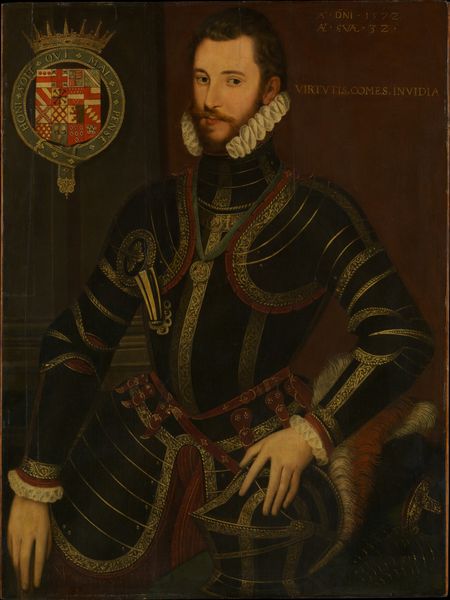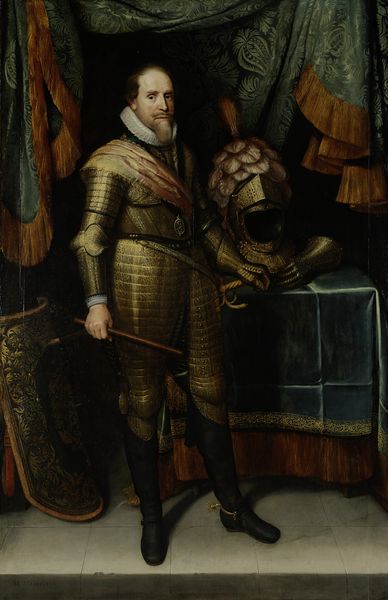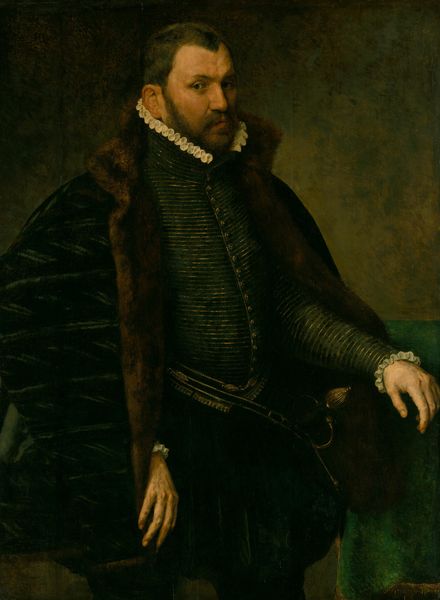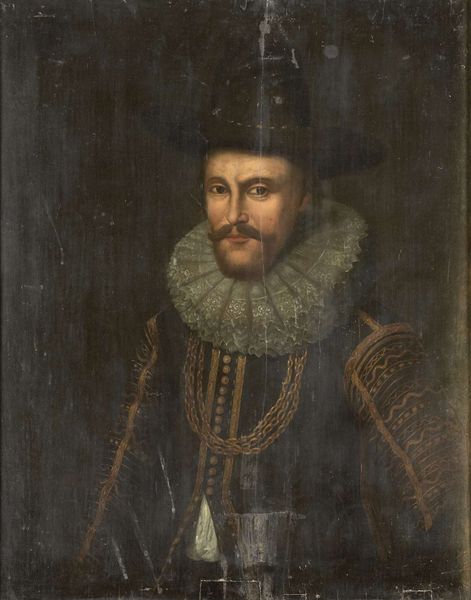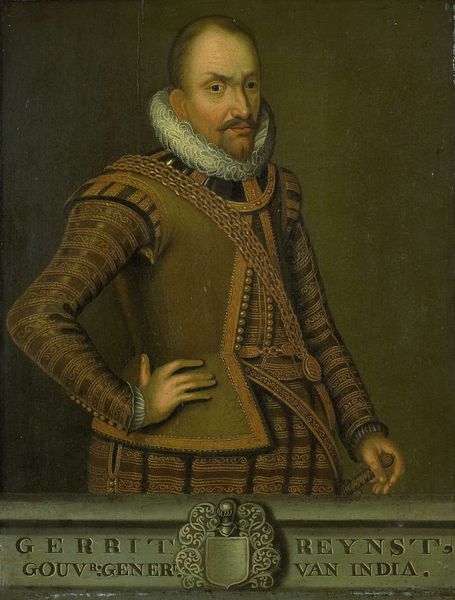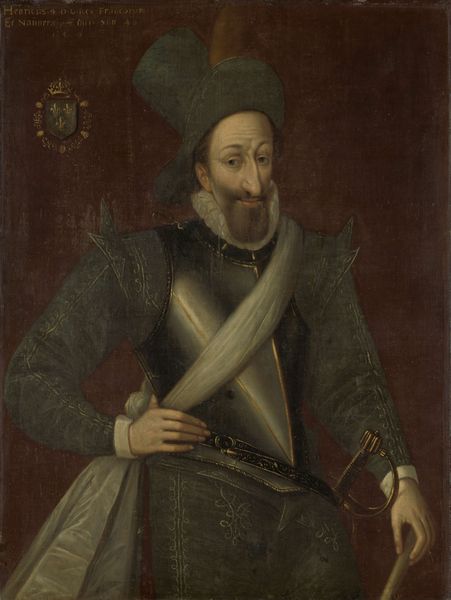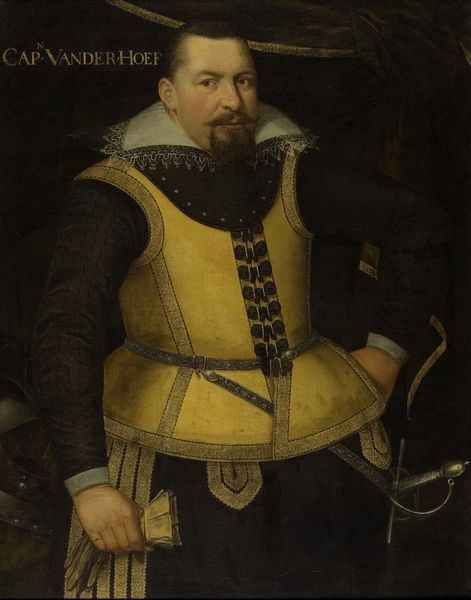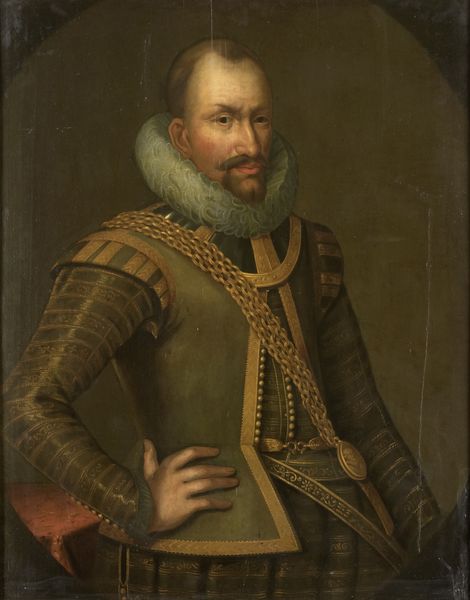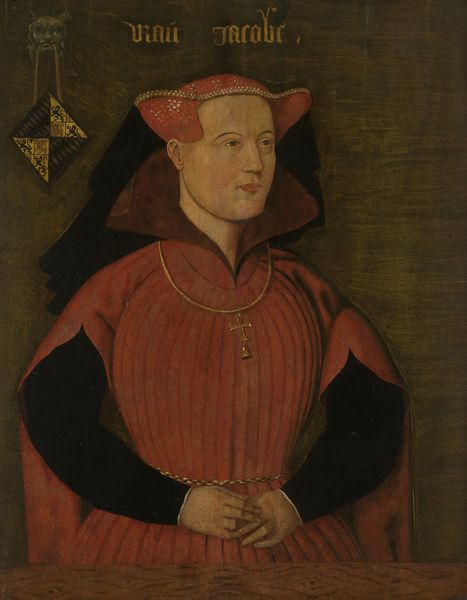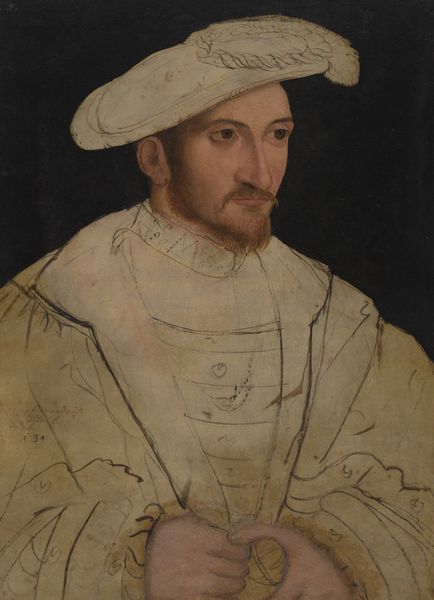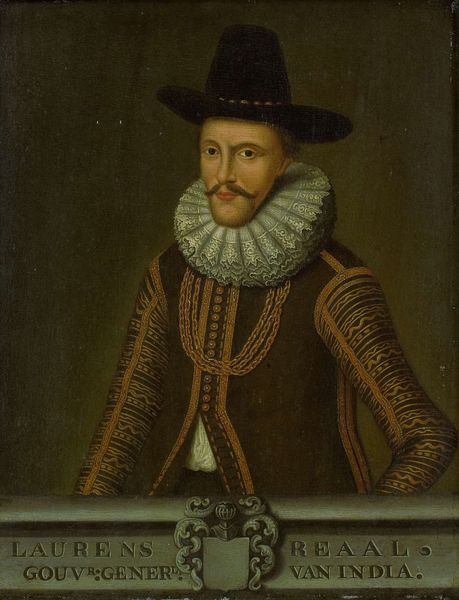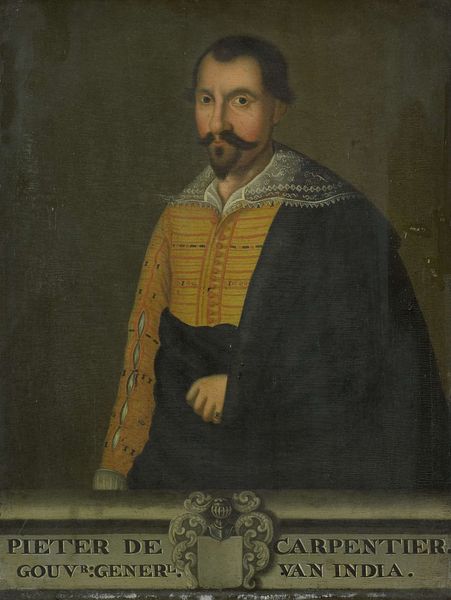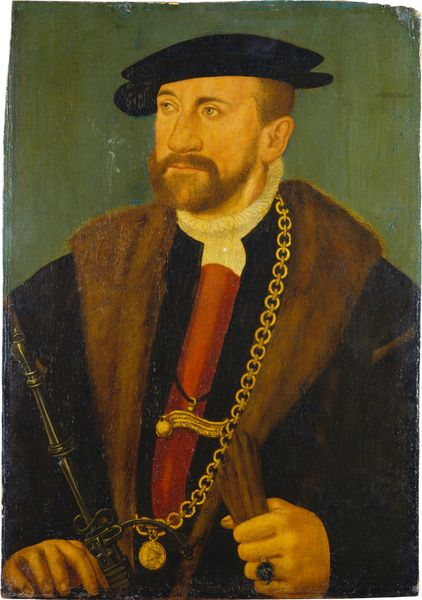
Presumably Posthumous Portrait of Rudolph van Buynou (d 1542), High Bailiff of Stavoren and 'Grietman'of Gaasterland 1553
0:00
0:00
oil-paint
#
portrait
#
oil-paint
#
figuration
#
11_renaissance
#
oil painting
#
northern-renaissance
#
portrait art
Dimensions: height 90 cm, width 69 cm
Copyright: Rijks Museum: Open Domain
Curator: Right, so, Adriaen van Cronenburg painted this dignified fellow in 1553. It's titled "Presumably Posthumous Portrait of Rudolph van Buynou," who held some impressive titles back in the day, High Bailiff of Stavoren and 'Grietman' of Gaasterland. Editor: Wow, posthumous, eh? He's got a rather serious, slightly melancholy air about him, wouldn't you say? It's as if he's staring out across time itself. The high contrast and flattened perspective adds to the weightiness. Curator: It's oil on panel, which contributes to that flatness you mention, but also gives it a lasting gravitas. Notice the heraldry to either side of the figure? We can assume that would have resonated with particular cultural importance. It certainly speaks to his elevated standing in Frisian society. It anchors him within a system. Editor: It's funny how these portraits become political artifacts, aren’t they? They're simultaneously intimate representations, capturing a likeness, and declarations of status. I'm always struck by the contrast: the softness of that fur-trimmed hat, practically overflowing with softness, paired with the stern gaze and heavily ornamented garment. It's such an interesting blend of power and gentility. And I must ask - did people really have to put rings on all of their fingers at that time? Curator: Probably only if they could afford it! Luxury was about display. Van Cronenburg does an interesting job of showing details in a precise, almost graphic style, but the figure still remains somewhat unknowable, distant. We should also note how the painting itself functions within art historical currents of that era, of this sort of representation and memorialization. Editor: I wonder what he’d make of us now, staring back across the centuries. Perhaps the man, Rudolph van Buynou, would be quite tickled to know his image has traveled so far. That he is not only a public person memorialized on this painting but someone from long ago still open to interpretation by someone now. Curator: Yes, time turns individuals into representatives, their clothes and heraldry and even their gaze speaking of social patterns long gone. It's not just about what they wore but what it *meant*. A visual echo, perhaps, or a lingering whisper.
Comments
No comments
Be the first to comment and join the conversation on the ultimate creative platform.
